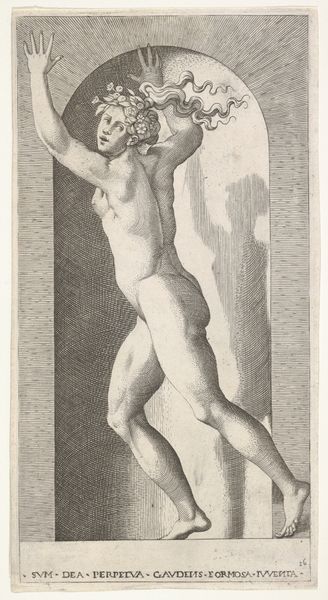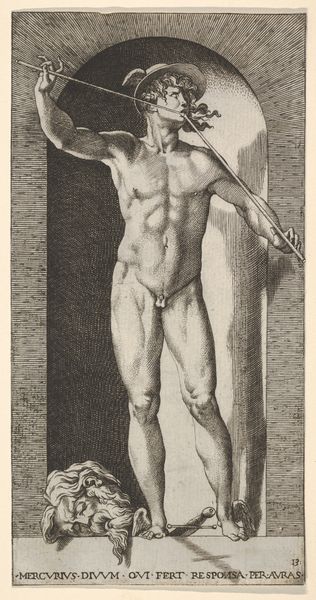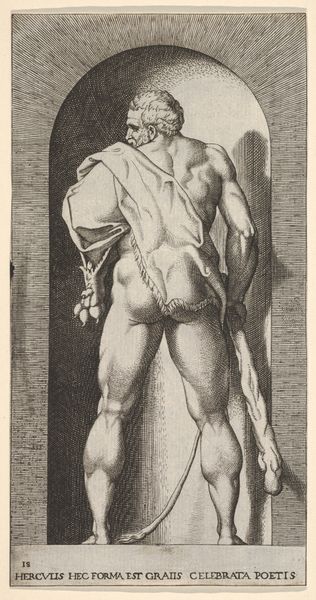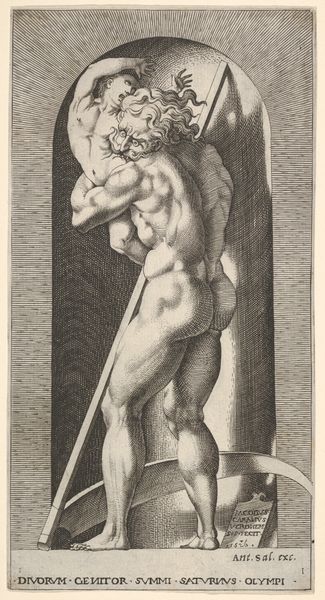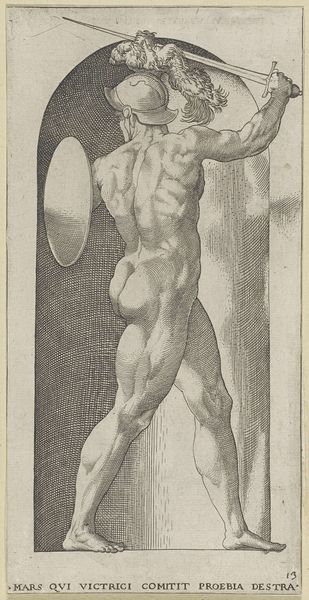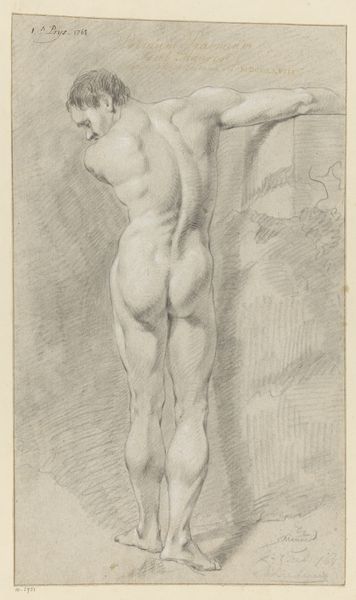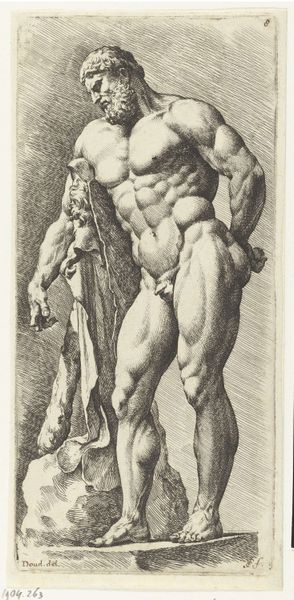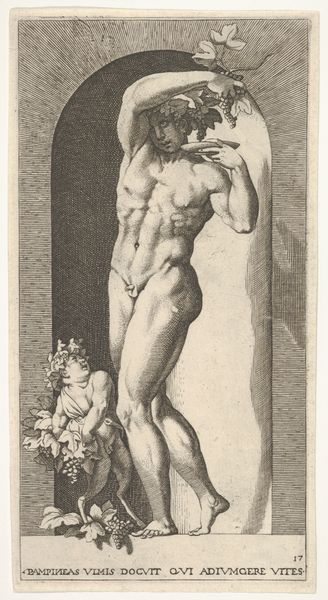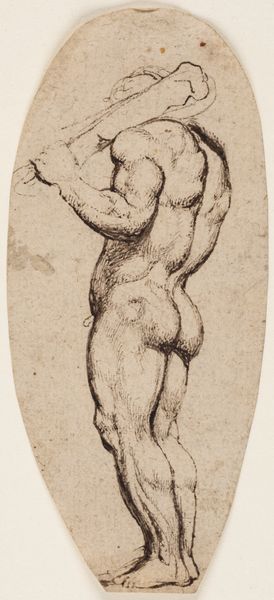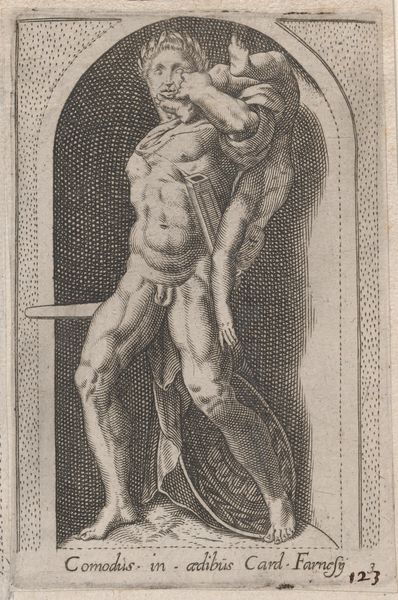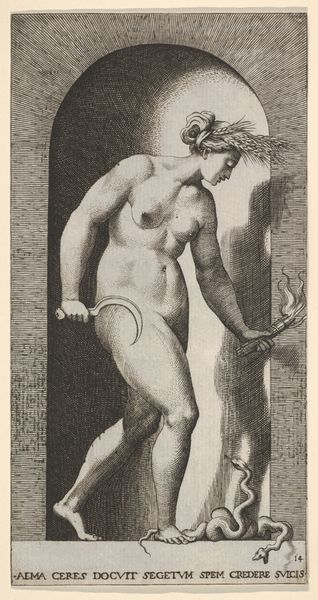
Plate 9: Mars in a niche, holding a sword above his head with his right arm, and a shield on his left arm, from "Mythological Gods and Goddesses" 1526
0:00
0:00
drawing, print, engraving
#
drawing
# print
#
figuration
#
11_renaissance
#
history-painting
#
academic-art
#
italian-renaissance
#
nude
#
engraving
Dimensions: Sheet: 8 1/4 × 4 1/4 in. (21 × 10.8 cm)
Copyright: Public Domain
Curator: This is Plate 9 from "Mythological Gods and Goddesses," dating back to 1526 and created by Giovanni Jacopo Caraglio. It depicts Mars. Editor: My immediate impression is the striking contrast – this robust, almost bulging physique rendered in such precise lines. It feels very controlled, yet simultaneously raw. Curator: Absolutely. Caraglio, an Italian engraver, was instrumental in disseminating classical imagery during the Renaissance. This print reflects the period's fascination with antiquity, seen through the lens of Humanist scholarship. The nudity, pose, and subject matter—Mars, the god of war—all recall classical sculptures. Editor: The medium itself, engraving, speaks volumes. It’s labor-intensive, requiring incredible skill. And the choice of printmaking meant this image could be widely distributed, shaping visual culture across Europe. Think about the workshops involved, the paper, the ink... it's a network of production. Curator: Exactly. Prints like these weren't just aesthetic objects. They were tools for artistic education, for spreading ideas, and even for asserting political power through carefully chosen imagery. Editor: It's interesting how Mars is positioned within this niche. The strong contour creates almost a stage for the subject. Curator: Consider the function of prints as readily reproduced and shared across long distances. Engravings were critical in disseminating artistic conventions of the Renaissance—classicism—to a wide audience who may not have direct contact with painting and sculpture, let alone Roman ruins. Editor: Seeing those minute, meticulous lines creating this muscular form is incredible, and makes me reflect on the dedication required to learn such craft, but how that dedication also solidified an adherence to tradition in portraying the male body, one that could influence how people perceived strength, beauty, and masculinity across society. Curator: It highlights the dialogue between artistic ideals and social expectations prevalent at the time. Thank you. Editor: Yes, thinking through the material and its potential audience has definitely given me some perspective as well.
Comments
No comments
Be the first to comment and join the conversation on the ultimate creative platform.

